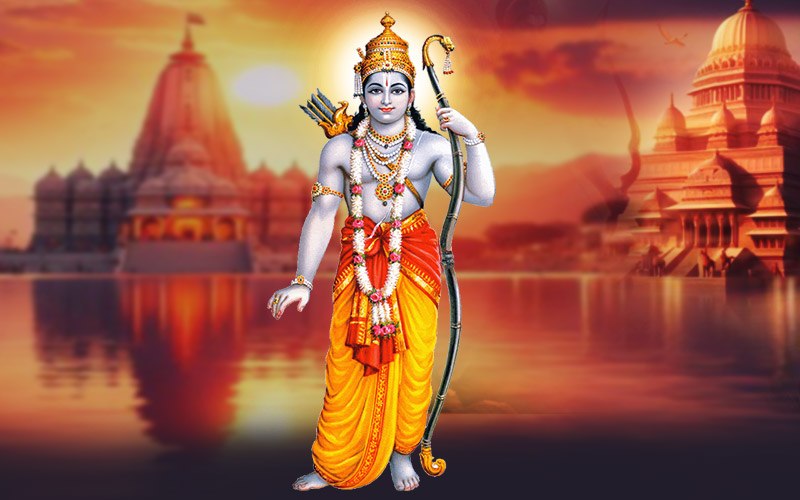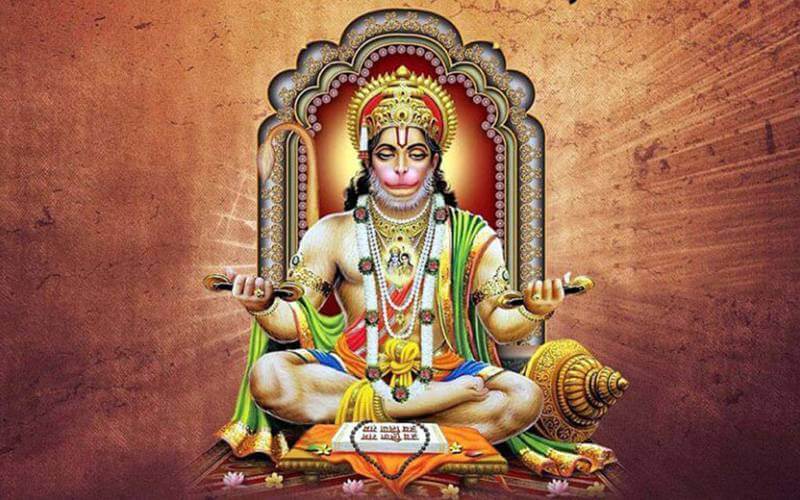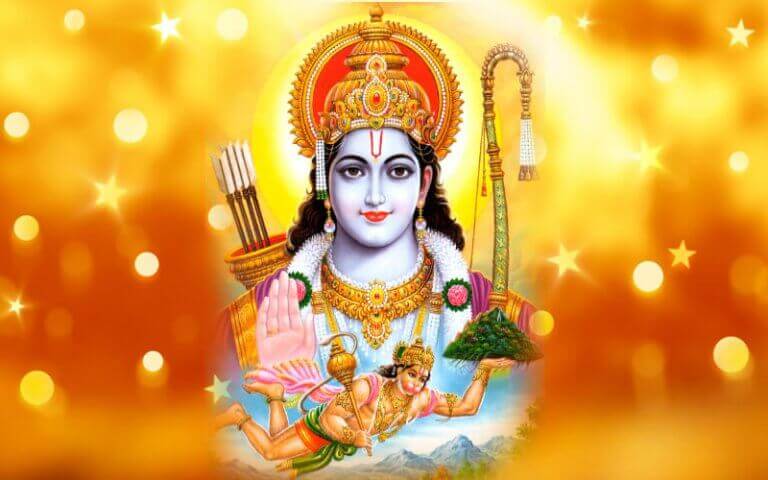
Bhagwan Rama is worshipped as a representation of righteousness, virtues, and the ideal way of life. His life and actions are considered to showcase the ideals of dharm and his story is a metaphor for the struggles and triumphs of the human self.
In Hinduism the concept of Atman, or the self, is central to understanding the significance of Bhagwan Rama. Bhagwan Rama represents the embodiment of the higher self, the divine essence within each individual. His unwavering commitment to dharma, even in the face of adversity, symbolizes the pursuit of righteousness and the conquest of one’s inner conflicts.
Bhagwan Rama’s exile, prompted by his father King Dasharatha’s promise to his stepmother Kaikeyi, sees him leaving Ayodhya for the forest, accompanied by his devoted wife Sita and loyal brother Lakshmana. His brother Bharat who is son of Kaikeyi chose to rule the kingdom with slippers of Bhagwan Rama on the throne. During his exile, Sita is abducted by the demon king Ravana, leading to a war where Rama, with the help of the vanar or monkey king Hanuman and an army of vanaras, defeats Ravana and rescues Sita. Following these trials, Rama and Sita return to Ayodhya, where Rama assumes his rightful place as the king, upholding dharma and ensuring the welfare of his people. As a king, he upholds dharma by even subjecting his spouse Sita to exile from the kingdom due to suspicious by certain sections of the society as the king is above all tarnishes. After giving birth to his children, Sita chose to return to the earth from whence she emerged, embodying her unwavering fidelity to truth and righteousness.
The epic Ramayana portrays the journey of Bhagwan Rama as a reflection of the individual’s quest for self-realization and the fulfillment of one’s dharma. His adherence to virtue, loyalty, and duty serve as a guide for individuals seeking to understand and align themselves with their true nature. By following the path laid out by Bhagwan Rama, one is encouraged to cultivate qualities such as compassion, integrity, and resilience, ultimately leading to the realization of the self’s higher potential.
The 10 heads of Ravana are associated with ten tamasic qualities or vices (born from the Egoic “Self”) of Kama (Lust), Krodha (Anger), Lobha (Greed), Moha (Delusion), Mada (Pride), Matsarya (Jealousy),Swartha (Selfishness), Ahankara (Ego), Adharma (Unrighteousness) and Himsa (Violence).
The Key Virtues associated with Rama or the Ideal of the Self are:
- Dharma: Rama is celebrated for his unwavering commitment to dharma, the righteous path or duty. He upholds moral and ethical principles, fulfills his responsibilities, and acts in accordance with the greater good, even in the face of adversity.
- Sincerity: Rama embodies sincerity and authenticity in his words and actions. He demonstrates a genuine and earnest approach to his roles as a prince, husband, and leader, earning the trust and admiration of those around him.
- Compassion: Rama exhibits deep compassion and empathy towards all beings. His care and concern extend beyond his immediate circle to encompass the welfare of all, reflecting a universal sense of love and understanding.
- Courage: Rama demonstrates exceptional courage in the face of challenges and hardships. He remains resolute and brave, facing daunting trials with fortitude and a steadfast spirit.
- Integrity: Rama is known for his unwavering integrity and honesty. His conduct is characterized by a strong adherence to truth and moral rectitude, earning him the reputation of an ideal and righteous leader.
- Humility: Rama carries himself with humility and modesty, despite his noble lineage and exceptional abilities. He remains unassuming and approachable, setting an example of grace and humility for others to emulate.
- Devotion: Rama exemplifies deep devotion and loyalty to his principles, family, and loved ones. His steadfast commitment and love for Sita, his wife, symbolize the depth of his devotion and the enduring nature of true love.
- Leadership: Rama embodies the qualities of a visionary and compassionate leader. He inspires and guides others with wisdom, empathy, and a sense of duty, establishing an enduring legacy of ethical leadership.
- Self-discipline: Rama practices rigorous self-discipline and self-control. He demonstrates mastery over his senses and emotions, manifesting a disciplined and balanced approach to life and its challenges.
- Forgiveness: Rama exemplifies the virtue of forgiveness, even in the face of betrayal and hardship. His capacity to forgive and reconcile reflects a profound wisdom and a compassionate understanding of human frailty.
These virtues associated with Rama serve as moral and spiritual ideals, inspiring individuals to seek higher values and ethical conduct in their own lives. The battle between Bhagwan Rama and Ravana is metaphorical, representing the eternal struggle between the higher self and the lower tendencies within each person. It symbolizes the internal conflicts and the choices individuals face in their pursuit of righteousness and self-realization. By overcoming the influence of these negative qualities, one can strive to establish harmony and balance within the self, aligning with the principles of dharma.
Being established in Bhagwan Rama, or embracing the virtues and principles he embodies, is believed to lead to success and fulfilment in various aspects of life. The life of Bhagwan Rama serves as a model for individuals seeking to lead a life of purpose, meaning, and ethical conduct. By following the example set by Bhagwan Rama, one can strive to overcome the inner conflicts and negative tendencies represented by Ravana, thus embarking on a journey towards self-realization and spiritual growth.


